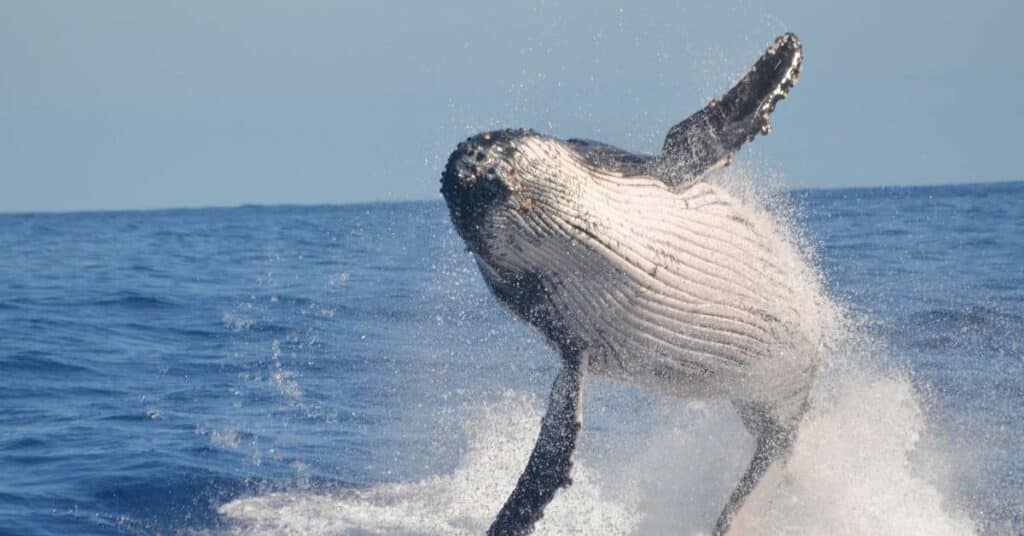For many, spotting a whale in the wild is a truly moving experience, which is why countless people book whale-watching tours in hopes of seeing these magnificent creatures in their natural environment.
While some whale watchers are lucky enough to catch a glimpse or even witness a breach up close, few have the privilege of experiencing something as rare as what a group of tourists recently saw off the coast of Dana Point, California.
Though boats are legally required to stay 100 yards away from whales, if one swims close to a stationary boat, the captain is advised to remain still to avoid disturbing the animal. This was the case when a gray whale approached a Capt. Dave's Dana Point Dolphin & Whale Watching Safari tour boat. Initially, passengers and crew thought they were witnessing something tragic, as the whale was splashing and surrounded by blood in the water, leading some to believe it had been attacked by a shark.
But the reality was far more incredible than anyone could have imagined—what they were witnessing was a mother whale giving birth to her calf.
In a video shared by Twitter user Jeremy Theisen, you can hear the crew and passengers discussing what they were seeing as it became clear the event was a birth. Capt. Dave’s later shared drone footage of the miraculous moment, showing the newborn calf learning to swim and the mother proudly presenting her newborn to those fortunate enough to witness the birth.
“This is a first for all of us. We've never actually seen it happen,” said Capt. Gary Brighouse, according to WXXI News.
Capt. Dave’s also shared in a statement on YouTube that after surfacing, the calf began bonding with its mother, even swimming close to the boats as the mother seemed to show off her new arrival.
Gray whales typically give birth in the warm, protected lagoons of Baja California, Mexico, which offer safety from predators like orcas and provide warmer waters for the newborns. However, some calves are born during the whales' long migration along the U.S. west coast, which spans 10,000 to 12,000 miles round-trip from their feeding grounds in Alaska to their birthing and mating lagoons in Baja.
Alisa Schulman-Janiger, who leads the Los Angeles chapter of the American Cetacean Society’s Gray Whale Census and Behavior Project, described the birth footage as “astounding” and noted its value for researchers. She explained that the blood in the water indicated the calf had just been born, and she noted the rarity of such footage.
Schulman-Janiger emphasized how the mother whale was gently holding the calf, helping it rest and breathe as they displayed typical bonding behavior. She reflected on the rarity of such moments, saying, “It's extraordinarily rare and really, really special for people to be able to share in those first few moments of a young whale's life.”
Witnessing the birth of a whale calf is an unforgettable experience, and a profound reminder of the beauty and mystery of the natural world.
 Skip to content
Skip to content
